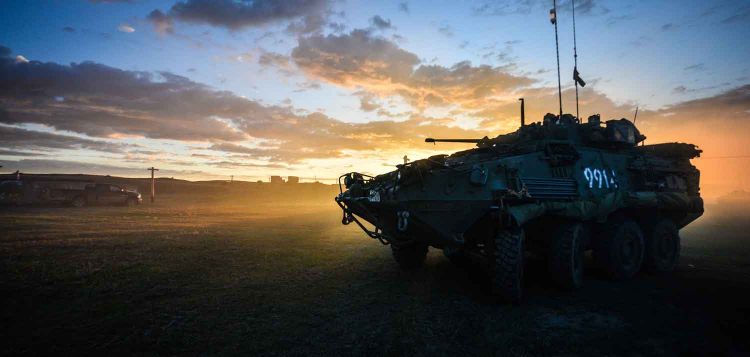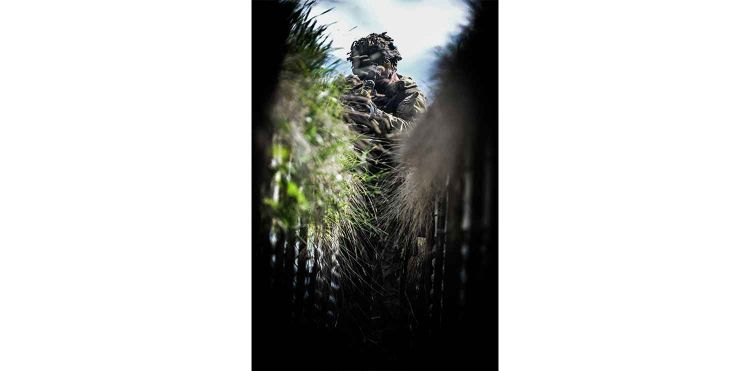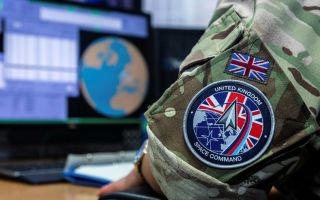British Forces Return To Canada For Prairie Storm
On a remote Canadian prairie, where the land appears never-ending and the sun lights the sky with a burning red hue, is the British Army’s largest training ground.
The British Army Training Unit Suffield (BATUS) is situated in the province of Alberta in Canada, around 4,500 miles from London. Every year, thousands of soldiers from the UK train in BATUS between March and November.
The British Army have been using the prairie for more than 40 years. In 1971, a 10-year lease was signed by the British Government and the Canadian Government which authorised battle group training to take place in the Suffield area by the British Army. In 1972, BATUS was formally established.
The vast prairie is 2,960 km² in size which is seven times larger than the training area at Salisbury Plain in Wiltshire. The weather at BATUS can be unpredictable. In summer, the temperatures are in excess of 30˚Cbut the winter months can see temperatures drop to below -40˚C.
“[BATUS] is very, very big and that gives you an awful lot of flexibility in how you can use it as well as just the size of formations you can do on it. And it allows us to conduct really realistic, large-scale live-fire exercises on it,” said Colonel Jim Landon, the Commander of BATUS.
“Another thing is it doesn’t really have any neighbours, or at least nobody who is going to complain about the noise or what we are doing and so on, so there are very few restrictions on what we can do.”
This year, around 4,500 soldiers from 12th Armoured Infantry Brigade (3rd (UK) Division) have travelled to BATUS to take part in Exercise Prairie Storm. The six-week exercise includes a live fire stage and also the use of a Tactical Exploitation System (TES). So far this year there have been three Exercise Prairie Storms and a fourth one is scheduled.
In September, 1st Battalion, the Yorkshire Regiment’s battle group started training on Exercise Prairie Storm. The majority of the battle group are from 1 YORKS but there are also members of The King's Royal Hussars and The Royal Engineers. The battle group are training to become the UK's next Lead Armoured Task Force in April. The role means that the unit will be held at high readiness and will be the first to deploy should war break out anywhere in the world.
“This exercise is seen as a get-you-in package for future operations,” said Lieutenant Colonel Andrew Garner, the Commanding Officer of 1 YORKS. "
So it will allow my men to operate and survive in whichever environment we will deploy to, or could deploy to, next year”.
1 YORKS battle group will take the title from The King's Royal Hussars in April and will remain the Lead Armoured Task Force for six months before it is given to another unit within the 12th Armoured Infantry Brigade.
Behind the scenes at BATUS there are a number of temporary and permanent members of staff who ensure everything is running smoothly during the exercise period.
The garages on the base cater for around 380 vehicles and there are a team of mechanics and engineers on hand to fix anything from Warriors to Challenger 2 tanks. On any one exercise more than a thousand vehicles are used. The prairie is primarily flat but there are areas of land where the terrain can be mountainous, this combined with the challenging weather conditions can mean the vehicles suffer during the exercises.
Sergeant Mark Hollinshead works at the garages at BATUS, “We have eight permanent staff and then we bolster it up with temporary staff who come from all different units throughout the army.”
There are also a number of safety advisors and mentors who follow the movements of the battle group on the prairie. During the live fire stage of the exercise the safety advisors main role is to make sure no one is put in danger. On the second stage, the TES phase which uses lasers to simulate a battle, an advisor will take on more of a mentoring role and they will analyse how the battle group are performing. The advisors will report back to the commanders throughout the exercise and a report detailing what the battle group did well and what they could improve on is provided to the exercising troops at the end.
Captain Joe Queening, from the Royal Tank Regiment, is a safety advisor at BATUS. Captain Queening has trained at BATUS and so understands what the troops are going through.
He said, “I remember myself being extremely fatigued and trying to do a million things at once and feeling extremely stressed, but also having to ensure that I gave the correct answer and got into the correct position and also know the position of my other tanks.”
The British Army is in a period of change. By 2020 they hope to have reduced the number of regular soldiers to 82,000 and doubled the number of reservists to 30,000. The Army has also reconsidered what training grounds it will need in the future to meet its adapting needs.
Colonel Jim Landon said, “Last year [the Army] conducted an experiment to see whether [BATUS] was the right place to conduct this type of training for the future."
“It was looked at by the Army board who considered another option in Germany against this. They did it very scientifically, analysing all the data, costs and the benefits of each of the different options and it was decided that BATUS was still good value for money.”
He added, “A decision was made that we would stay and that we would be here for in the region of another 20 years... and we are now investing in it and developing BATUS for the future.”
PICTURES: Sgt Mark Webster RLC photographer











